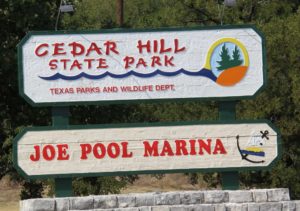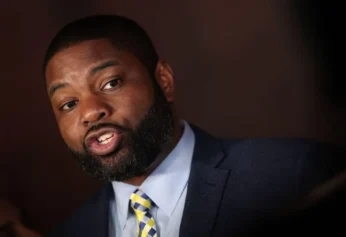
Cedar Hill State Park in Dallas County, Texas. Courtesy Joe Pool Lake.
As temperatures rise and school years come to an end, U.S. national and state parks prepare for their biggest season of the year. This summer marks the 100th anniversary of the National Parks Service, and officials anticipate record numbers of tourists to flood the sprawling landscapes.
One group of citizens will be notably absent from the crowd: Black Americans.
At least, according to the latest research by the University of Missouri’s School of Natural Sciences. While previous studies have indicated that the average patron is overwhelmingly white and older, Dr. KangJae Lee, assistant teaching professor and the study’s lead author, dug a little deeper to find out why so many Black people choose not to support some of the country’s greatest natural resources.
The Texas A&M graduate focused on Cedar Hill State Park, just 10 miles southwest of Dallas. Lee was curious as to why the park, located in a predominately middle-class, African-American community, drew so few local residents. “Bourdieu and African Americans’ Park Visitation: The Case of Cedar Hill State Park in Texas,” published June 1 in Leisure Sciences, tells a story of generational racism and prejudice.
Before the 1,826-acre site was designated a state park, it served as a family estate for the owners of enslaved Blacks. This very significant piece of history is noticeably absent from park signage and literature, which refer to the plantation as a “farm.” John Anderson Penn indeed settled the land for farming in 1854, however, a Texas Parks & Wildlife Department report notes Penn and his sons acquired several enslaved Africans in the years before the institution divided the country. Lee references the report in the study.
“For example, Joseph R. Penn’s property value nearly tripled, from $2,190 in 1855 to $6,100 in 1860, and the Penn brothers’ economic prosperity continued until the Civil War,” Lee wrote. “Family lore suggested that John Anderson Penn’s sexual promiscuity with a female slave caused a serious rift between him and his sons. John Penn Anderson’s divorce and subsequent return to Illinois in the 1860s may support this notion.”
Lee said such glaring omissions of Black American history are well documented at public park and recreational facilities across the country.
“So the question is: Whose story needs to be told to the public and future generations? African Americans I interviewed firmly believed that African American history needs to be told at these parks,” Lee said in a university press release.
Lee interviewed 13 townspeople for the study, and residents of various ages and economic backgrounds pointed to the town’s history of Jim Crow-era segregation.
He said many of the interviewees were the children of people who were once strongly discouraged and outright barred from visiting the outdoor spaces, and therefore have no interest in supporting the park in present day.
“How do you expect today’s African-Americans to appreciate them if their parents couldn’t appreciate them, their grandparents were not able to appreciate them,” Lee told the Texas Standard. “It’s a socialization process. African-Americans have had limited opportunity to develop a recreational culture. It’s sort of a legacy of racial discrimination.”
Respondents also cited the mass exodus of whites from the surrounding neighborhoods, which has led to increased acts of racial aggression by those left behind. The African-American locals said they did not feel welcome at community businesses, churches and outdoor amenities.
These parks are not only missing out on the rich cultural and historical tradition African-Americans could add to the experience, they’re also losing the powerful Black dollar.
The National Park Service is a big booster for the national economy. Last year visitors to America’s National Parks spent a reported $16.9 billion in communities within 60 miles of a national park.
The revenue supported 295,000 jobs, providing $11.1 billion in labor income, $18.4 billion in value added, and $32 billion in economic output to the U.S. economy, according to a Service report released in April.


